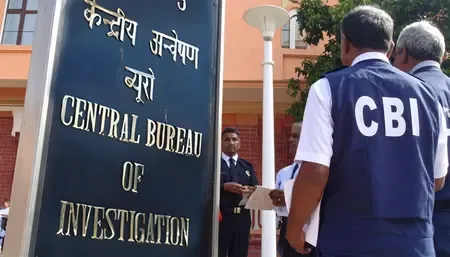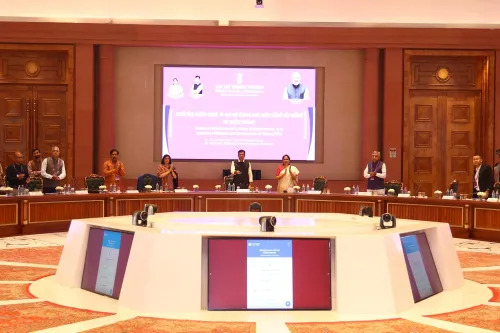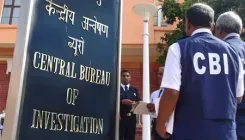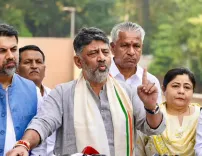How Did India’s Diplomacy Reveal TRF’s Connection to Pakistan?
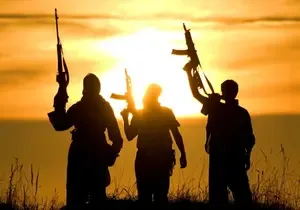
Synopsis
Key Takeaways
- The TRF was linked to the Pahalgam attack that killed 26 individuals.
- Pakistan's pressure on TRF reflects fears of FATF consequences.
- India's diplomacy led to the U.S. designation of TRF as a terrorist organization.
- China's influence helped Pakistan evade UNSC scrutiny.
- Future FATF meetings could challenge Pakistan's standing.
Bengaluru, July 23 (NationPress) The Resistance Front was swift to take responsibility for the tragic Pahalgam attack that resulted in the deaths of 26 individuals. Yet, it was not long before the Pakistani establishment pressured the TRF to retract its claim, fearing potential consequences from India's actions regarding the Financial Action Task Force (FATF).
Having recently extricated itself from the FATF’s Grey list, Pakistan is in no position to risk being placed back on that list, especially given its current economic challenges.
Prior to the U.S. declaring the TRF as a global terrorist organization, Pakistan engaged in intense lobbying to prevent this designation, as any link to TRF’s activities would directly implicate them.
For India, securing the TRF's classification as a global terrorist group was crucial, especially in light of the horrific Pahalgam incident.
In May, China assisted Pakistan by ensuring that the TRF was not named during discussions in the United Nations Security Council (UNSC). In contrast, India engaged in high-level diplomacy that ultimately influenced the U.S. to proceed with the designation.
Since the inception of this group, which acts as a proxy for Lashkar-e-Tayiba, India has been compiling a comprehensive dossier. Initially, the TRF attempted to present itself as a local entity, recruiting residents of Jammu and Kashmir for its operations.
The group claimed to address grievances surrounding the revocation of Article 370 and vowed to safeguard local interests. However, the Pahalgam attack revealed the involvement of three terrorists of Pakistani origin, dispelling any notion of TRF being purely home-grown.
This situation elucidates why Pakistan was anxious about the TRF gaining global terrorist status. The diplomatic initiative led by Foreign Secretary Vikram Misri included detailed dossiers prepared by the NIA, Intelligence Bureau, Research and Analysis Wing, and Jammu and Kashmir police.
These dossiers were presented to the United States and the 1267 Committee of the United Nations. Misri’s visit to the U.S. from May 27-29 resulted in the dossier being delivered to the U.S. State Department, and a similar submission was made to the UN in New York.
The dossier identified Sheikh Sajjad Gul, also known as Sajjad Ahmed Sheikh, as the Kashmiri figurehead of Lashkar-e-Tayiba, appointed by the ISI to lead the TRF. The group has been linked to numerous attacks, including targeted killings from 2020 through 2024, primarily in central and south Kashmir.
In 2023, a grenade assault in Central Kashmir targeted a police unit, with similar incidents documented in the dossier, which has since been updated to include details from the Pahalgam attack.
On the funding front, the dossier reveals information about Parvez Ahmed Sheikh, a former doctor and brother of Gul, who moved to Saudi Arabia before residing in Pakistan. He has emerged as a major fundraiser for Lashkar-e-Tayiba in Jammu and Kashmir.
After the U.S. decision, External Affairs Minister Dr. S. Jaishankar expressed gratitude towards the Trump administration. “Today, the Department of State is designating The Resistance Front (TRF) as a Foreign Terrorist Organization (FTO) and a Specially Designated Global Terrorist (SDGT),” stated U.S. Secretary of State Marco Rubio.
“These actions by the Department of State reflect the Trump Administration’s commitment to safeguarding our national security, combating terrorism, and fulfilling President Trump’s call for accountability following the Pahalgam attack,” added Jaishankar.
India's next step will involve addressing the FATF, as investigations have uncovered numerous aspects of Pakistan’s support for the TRF, not only in logistics and material but also financially.
Pakistan’s insistence on avoiding any mention of TRF in the UNSC raises suspicions. While it might have evaded scrutiny at the UNSC, thanks to China, its standing with the FATF may not be as secure.
Officials in New Delhi are poised to bring this issue to light in October. FATF plenary meetings typically occur every year in October, February, and June.
Pakistan was taken off the Grey List in October 2022 after being on it since 2018. India will persist in urging concerns regarding Pakistan’s inadequate measures against cross-border terrorism.
The upcoming October meeting could prove challenging for Pakistan, as it faces renewed scrutiny and the possibility of returning to the Grey List.
Equipped with a dossier, a designation from the United States, and India’s adept diplomatic maneuvers, Pakistan may soon find itself under pressure from the Financial Action Task Force once again.

